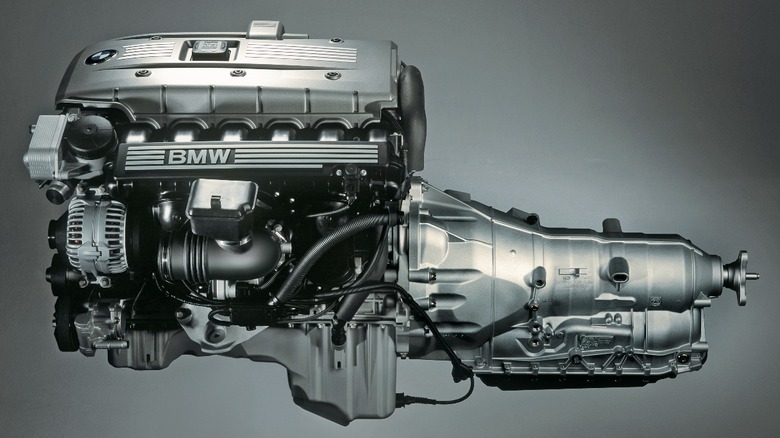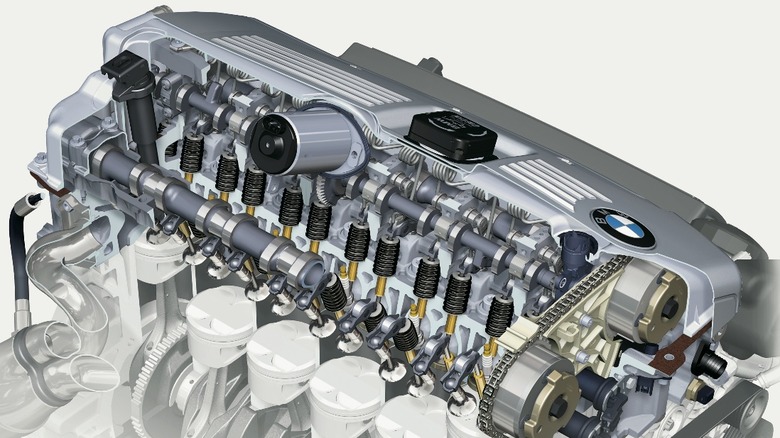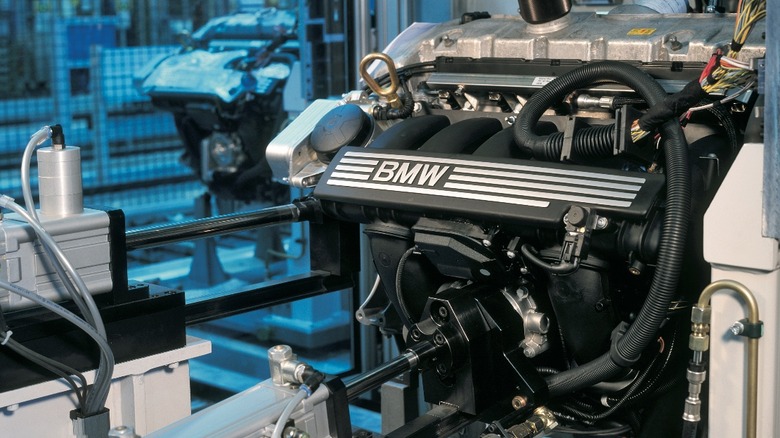The Best And Worst Years For BMW's N52 Engine According To Enthusiasts
The BMW N52 inline-six engine has certainly earned its reputation of being not only one of BMW's most reliable engines, but one of the most reliable engines to come out of Germany as a whole. The N52 debuted in 2004 and found a home in some of the Bavarian marque's most popular models, including the E9X 328i and E6X 528i.
Over the N52's production run between 2004 and 2015, it was offered in two different variants, including the N52B25 and N52B30. The main difference between the variants is displacement, with the N52B25 being a 2.5-liter engine and the N52B30 a 3.0-liter engine. While the N52 never received a full "technical update" like many other BMW engines, it did receive a refresh early in its production life that had an effect on both performance and reliability.
BMW updated the N52 to address some issues that BMW owners were having with the engine. The revised N52K variant of the N52 was released in June 2006 and introduced some annoyance-fixing improvements and some strengthened components. However, it also changed some elements of the earlier variant that made it easy to work on and nearly flawless in terms of reliability. Most enthusiasts agree that the decision between the early and late model N52 engines isn't black and white, as each version of the engine has its own benefits and shortcomings.
BMW N52 (2004-2006) vs N52K (2007-2015)
Most of the time, going for a newer version of an engine is generally wiser, as it gives the manufacturer time to work out the kinks and refine an engine over time. While it is true that the newer version of the N52 resolved some issues faced by the older versions of the engine, the revision also backtracked on some of the features that made the first version so dependable.
The updated N52K variant of the N52 — released in 6/06 and built until 2015 — features a revised cylinder head that resolves the hydraulic valve lash adjuster tick problem that plagued the earlier version of the engine and drove a massive number of owners crazy. That was a change that almost all BMW enthusiasts appreciated.
The N52K valve cover was also changed to have a simplified integrated crankcase ventilation system compared to the earlier N52's messier manifold integrated CCV system, making the N52K easier to service according to home mechanics. While the newer valve cover design helped resolve the early N52's CCV issues, BMW also switched it to a plastic composite, which proved to be much less reliable than the earlier N52's magnesium valve cover. Buyers say that the plastic N52K valve cover leaks less but is also known to crack and break, which wasn't an issue on the earlier variant.
The newer version of the engine also featured some revised internal parts, with some being a positive change for strength and performance and others being detrimental. The N52K received stronger connecting rods and larger exhaust valve stems, increasing the durability and lifespan of both components. Despite the good news, the N52K also uses a revised electric water pump, which is considered to be significantly less reliable than the earlier pump.
It's close to call, but the N52K comes out on top
So, as you can see, it isn't easy to definitively list the best model years for the BMW N52 engine, as it truly is subjective to individual preferences. The earlier variant of the N52 (2004-2006) is the more reliable choice, but suffers from some annoying issues — like hydraulic valve adjuster tick — which some enthusiasts simply can't stand. On the other hand, the updated N52K (2007-2015) is a more refined engine with stronger internal components, but is more prone to expensive repairs down the line.
Despite the N52K regressing in a few areas, its improvements outweigh its issues. While the earlier N52 engine has its perks, seeking out the newer version of an engine is usually the best option, and that is true in this case as well. Outside of the N52K's physical improvements to the N52's design, it is a newer engine which is important when it comes to the reliability of auxiliary engine components like coolant and vacuum lines which degrade over time and can be costly to replace.
Despite the 2007-2015 N52K variant winning out slightly, the BMW N52 is a fantastic engine that is both reliable and smooth either way; there really isn't a wrong answer here. If you're looking for proof, both the earlier 2006 N52 and 2007 N52K variants earned a spot on Ward's 10 Best Engines list for their respective year.


